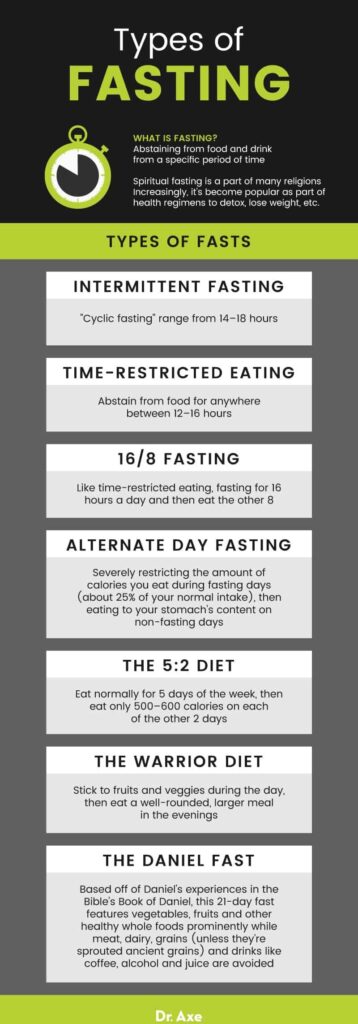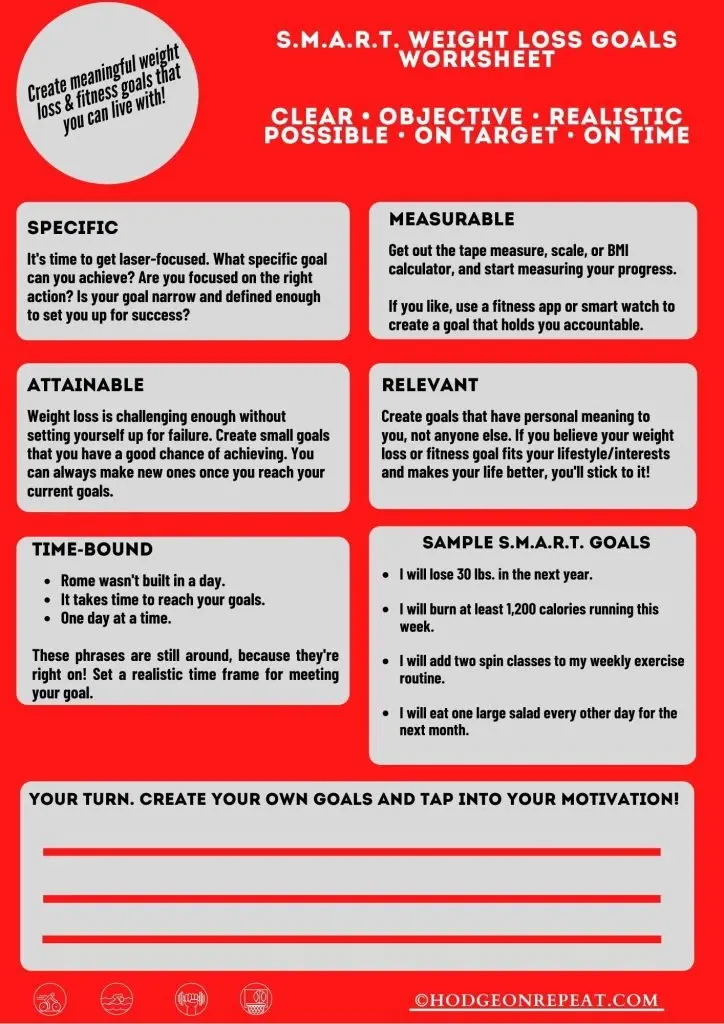Fasting, an age-old practice that has stood the test of time, continues to be embraced in various forms today for its multitude of health benefits. Modern methods of fasting, such as intermittent fasting, have gained popularity for their potential to promote weight loss and improve cellular response to stress. With different fasting windows and methods to choose from, such as 16:8, 18:6, 20:4, and 23:1, individuals have the flexibility to find an approach that suits their lifestyle. Beyond weight loss, fasting has also been linked to a longer lifespan, increased autophagy, and improved metabolism. During periods of fasting, you can consume plain water, black coffee, tea, and moderate amounts of bone broth, healthy fats, and artificial sweeteners. When breaking a fast, it is essential to prioritize a well-balanced diet consisting of appropriate portions of whole grains, fruits, vegetables, and protein. While fasting is generally safe, it is important to note that prolonged fasting can be dangerous and should be avoided in certain populations. By combining fasting with proper hydration, regular exercise, and a balanced diet, you can unlock the full potential of this ancient practice for optimal health and well-being.

This image is property of images.onlymyhealth.com.
Different Forms of Fasting
Fasting is an ancient practice that is still widely followed in various forms. From religious rituals to health and wellness trends, fasting has been a part of human culture for centuries. Today, there are numerous modern methods of fasting that have gained popularity for their potential health benefits. These methods range from intermittent fasting to prolonged fasts, each with their unique approach and outcomes.
Ancient Origins of Fasting
The origins of fasting can be traced back to ancient civilizations, where it was practiced for spiritual and religious purposes. In cultures such as ancient Egypt, Greece, and India, fasting was seen as a way to purify the body and mind, enhance self-discipline, and connect with a higher power. Fasts were often performed for extended periods, lasting days or even weeks. While the motivations may have differed, the practice of fasting has shaped human history.
Modern Methods of Fasting
In modern times, fasting has taken on new forms and purposes. One popular method is intermittent fasting, which involves alternating periods of eating and fasting. This approach is flexible and allows individuals to choose a fasting window that works best for their lifestyle. Common fasting windows include 16:8 (fasting for 16 hours and eating within an 8-hour window), 18:6, 20:4, and 23:1. These schedules can be adjusted to suit individual preferences.
Intermittent Fasting
Intermittent fasting has gained significant attention in recent years due to its potential health benefits. This approach to fasting can be practiced on a daily or weekly basis, and it allows for more flexibility in meal timings. By restricting the eating window, intermittent fasting can lead to weight loss, improved insulin sensitivity, and reduced inflammation. It may also help regulate hunger hormones, leading to better appetite control.
Fasting Windows
In addition to intermittent fasting, there are various fasting windows to choose from. Shorter fasting windows, such as 16:8 or 18:6, are more commonly practiced and easier to sustain. Longer fasting windows, such as 20:4 or 23:1, require more discipline and are often used for specific purposes like weight loss or metabolic reset. It’s important to find a fasting window that suits your lifestyle and goals.
Health Benefits of Fasting
Beyond the historical and cultural significance of fasting, there are numerous health benefits associated with this practice. From weight loss to improved cellular response to stress, fasting can have a positive impact on overall well-being.
Weight Loss
One of the most sought-after benefits of fasting is weight loss. By restricting the eating window and reducing calorie intake, fasting can create an energy deficit that leads to weight loss. Additionally, fasting has been shown to increase fat burning and improve metabolic rate, making it an effective tool for those looking to shed excess pounds.
Improved Cellular Response to Stress
Fasting triggers a natural response in the body called hormesis, which is the adaptive response to mild stressors. When you fast, your body undergoes a process called autophagy, where damaged cells are recycled and renewed. This cellular cleanup can improve overall cellular health and enhance the body’s ability to cope with stressors, such as illness or aging.
Longer Lifespan
Research suggests that fasting may contribute to a longer lifespan by reducing the risk of chronic diseases and promoting longevity. Studies conducted on animals have shown that intermittent fasting can extend lifespan and improve healthspan, which is the period of life spent in good health. While more research is needed, the potential benefits of fasting on longevity are promising.
Increased Autophagy
Autophagy, the process mentioned earlier, is a key component of fasting. It is the body’s way of renewing cellular components and eliminating damaged or dysfunctional cells. By promoting autophagy, fasting may help prevent the development of certain diseases, including neurodegenerative disorders like Alzheimer’s and Parkinson’s.
Improved Metabolism
Fasting has been shown to have a positive impact on metabolic health. It can improve insulin sensitivity, regulate blood sugar levels, and reduce markers of inflammation. By promoting healthy metabolic function, fasting may lower the risk of chronic conditions like diabetes, heart disease, and obesity.
This image is property of images.jpost.com.
What to Consume During Fasting
When fasting, it’s important to be mindful of what you consume to ensure you’re still supporting your body’s nutritional needs. While fasting restricts solid food intake, there are certain liquids and foods you can consume that won’t break the fast.
Plain Water
During a fast, water is your best friend. It keeps you hydrated and helps flush out toxins from your body. Additionally, drinking water can help curb hunger pangs and keep you feeling satiated throughout the fasting period. Aim to drink at least 8 glasses of water a day, or more if you’re physically active.
Black Coffee and Tea
If you’re a coffee or tea lover, you’ll be happy to know that black coffee and tea are generally considered safe to consume during a fast. However, it’s important to avoid adding any sweeteners or creamers, as they can break the fast. Stick to plain black coffee or unsweetened tea to reap the benefits without compromising your fast.
Bone Broth
Bone broth is a nutritious and flavorful option to consume during a fast. Made by simmering animal bones and connective tissues, bone broth is rich in minerals, collagen, and amino acids. It can provide nourishment and helps to keep you feeling satisfied during the fasting period. Just be sure to choose a bone broth that does not contain added sugars or flavorings.
Healthy Fats
Consuming healthy fats during a fast can help keep you feeling full and provide a steady source of energy. Foods like avocados, nuts, and olive oil are good sources of healthy fats and can be incorporated into your fasting routine. However, it’s important to consume them in moderation, as they are calorie-dense.
Artificial Sweeteners
While artificial sweeteners may not technically break a fast, it’s best to use them sparingly. Some research suggests that artificial sweeteners can still impact insulin levels and may hinder the benefits of fasting. If you must use sweeteners, opt for natural alternatives like stevia or monk fruit.
Breaking a Fast
After a satisfying fasting period, it’s essential to break your fast in a way that nourishes your body and supports your goals. Here are some key considerations when breaking a fast:
Well-Balanced Diet
When breaking a fast, it’s important to re-introduce solid food gradually and opt for a well-balanced diet. Include a mix of whole grains, fruits, vegetables, and lean proteins in your meal. This ensures you’re getting a variety of nutrients and supporting your body’s needs after the fasting period.
Portions and Food Choices
Pay attention to portion sizes when breaking a fast. It’s easy to overeat after a period of restriction, so be mindful of portion control. Listen to your body’s hunger cues and stop eating when you feel satisfied, rather than stuffed. In terms of food choices, opt for nutrient-dense options that provide a good mix of macronutrients and micronutrients.

This image is property of draxe.com.
Safety and Considerations
While fasting can be a beneficial practice, there are certain considerations to keep in mind to ensure your safety and well-being. It’s important to be aware of potential risks and avoid prolonged fasting in certain populations.
Prolonged Fasting
Prolonged fasting, which typically lasts longer than 48 hours, should be approached with caution. Extended fasting periods can have potential side effects like nutrient deficiencies, electrolyte imbalances, and muscle loss. It’s always best to consult with a healthcare professional before attempting prolonged fasts to ensure they are appropriate for your specific circumstances.
Certain Populations at Risk
Fasting may not be suitable for everyone. Pregnant or breastfeeding women, individuals with underlying health conditions, children, and those with a history of disordered eating should approach fasting with caution. It’s crucial to prioritize your health and well-being and seek guidance from a healthcare professional if you have any concerns.
Optimizing Fasting
To optimize the benefits of fasting, it’s important to consider additional lifestyle factors that complement the practice. Hydration, exercise, and a balanced diet can all enhance the positive effects of fasting.
Hydration
Staying hydrated is crucial during fasting periods. It helps support digestion, flushes out toxins, and keeps you feeling energized. Aim to drink an adequate amount of water throughout the day, and pay attention to signs of dehydration like dry mouth or dark urine.
Exercise
Incorporating exercise into your fasting routine can have a synergistic effect on health. Moderate-intensity exercise, such as brisk walking or cycling, can help maintain muscle mass, boost metabolism, and improve overall fitness levels. However, it’s important to listen to your body and adjust your exercise routine based on your energy levels.
Balanced Diet
While fasting can provide numerous benefits, it’s important to remember that it is just one aspect of a healthy lifestyle. To optimize the effects of fasting, it’s essential to maintain a balanced diet that includes a variety of nutrient-dense foods. Focus on consuming whole grains, lean proteins, fruits, vegetables, and healthy fats to support your overall well-being.
In conclusion, fasting in its various forms has a long and storied history, with modern methods like intermittent fasting offering new ways to improve health. From weight loss to increased autophagy, fasting has shown numerous health benefits. It’s important to consume the right liquids and foods during a fast and break the fast with a well-balanced diet. Safety considerations include avoiding prolonged fasting and being cautious in certain populations. To optimize fasting, stay hydrated, exercise regularly, and maintain a balanced diet. With these considerations in mind, fasting can be a powerful tool in improving your overall health and well-being.

This image is property of holisticlakewood.com.

